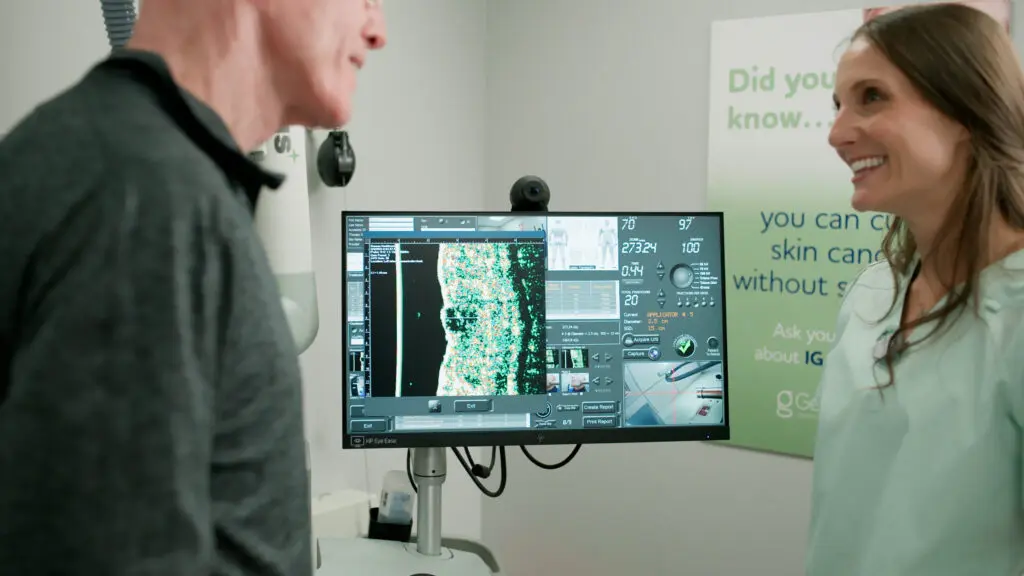
If you have been diagnosed with non-melanoma skin cancer, learn more about a gentler way to treat skin cancer.
The Science Behind IG-SRT
The high-frequency portion of the electromagnetic spectrum is where we find ionizing radiation. These high-frequency, low-energy X-rays are used in radiation therapy to damage the DNA of the cancer cells and disrupt their cell function.

A Non-Surgical Treatment Option
IGSRT offers a non-surgical treatment option for early-stage NMSC in appropriate patients, and it is suitable for most subtypes of basal and squamous cell carcinomas. The treated tumors must be Tis, T1 or T2.(AJCC ref)
IGSRT is typically delivered in 20 sessions with two to four 15-minute treatments per week. High-definition ultrasound imaging informs localization and lesion depth. The treatment is performed in the dermatologist’s office and there is no downtime or limits on daily activities. IGSRT typically has only minor side effects including short term erythema and hyperpigmentation.
About IGSRT

Image Guided Superficial Radiation Therapy integrates High Resolution Dermal Ultrasound (HRDUS) Imaging with Superficial Radiation Therapy, offering a significant advance in radiation-based treatment for non-melanoma skin cancers (NMSC). HRDUS imaging allows the practitioner to see and measure the lesion at every stage, enabling adaptive, needs-based dosing according to tumor response throughout the course of treatment1. Approximately 40% of treatment schedules are adjusted due to real-time HRDUS imaging.2
Precision targeting of cancer cells also allows practitioners to maximize efficacy while minimizing toxicity in alignment with the ALARA principle (as low as reasonably achievable).
IGSRT Efficacy and Safety are Supported by Numerous Peer-Reviewed Publications
IGSRT in the treatment of NMSC
14 Peer reviewed publications
99 %+ cure rate for BCC and SCC
0.2 % reported recurrence to tumor registry in 120,000+ lesions (76 BCC, 67 SCC)
Published Data Demonstrates Repeatable, High NMSC Cure Rates and Long-Term Freedom From Recurrence (FFR)
IG-SRT Cure Rates1:
- BCC 99.0%
- SCC 99.2%
- SCCIS 99.8%
Long Term Overall FFR Data:
- 2 year: 99.68%2
- 4 year: 99.54%2
- 5 year: 99.41%3
- 6 year: 99.54%2
- Study is Ongoing